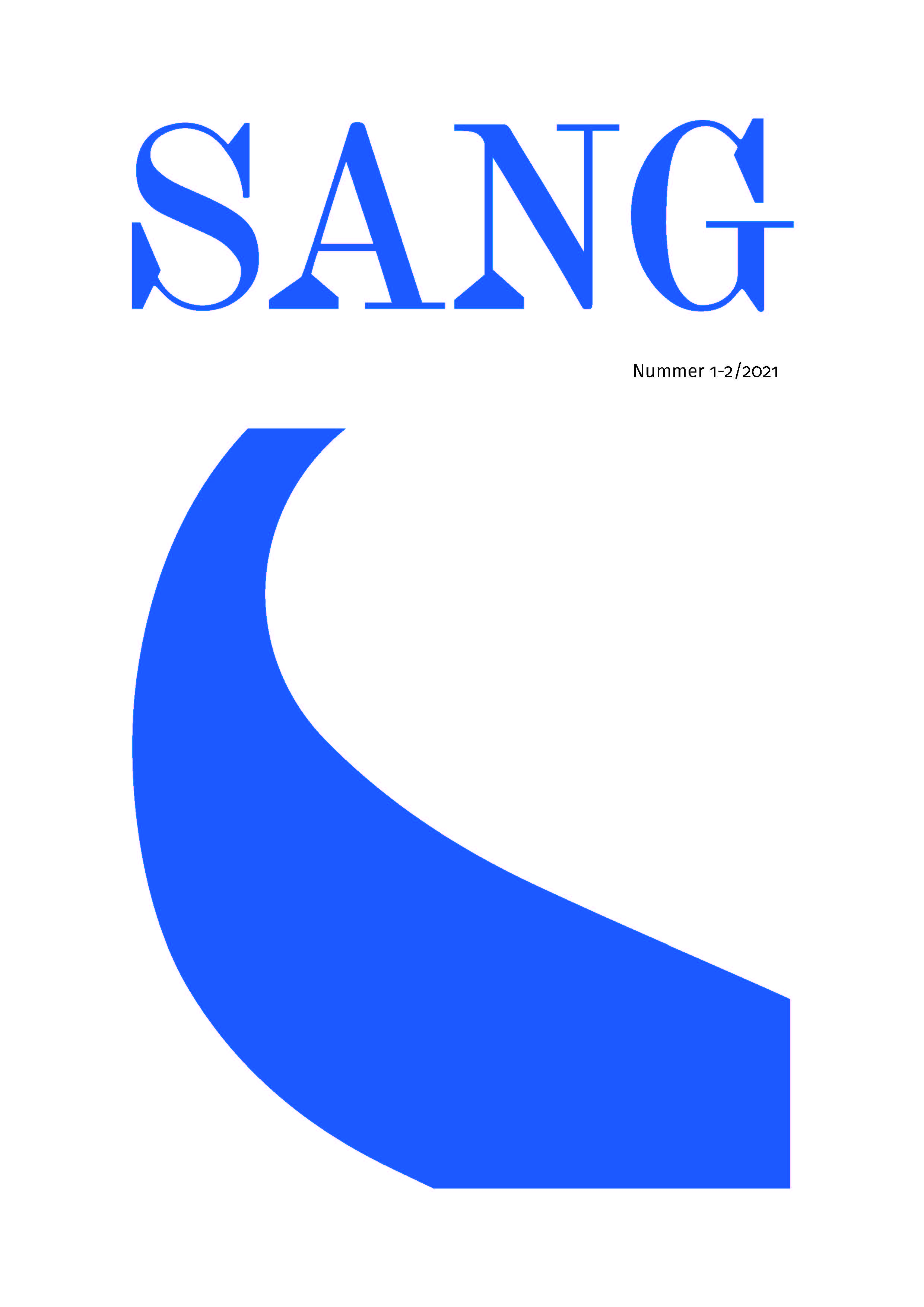Fornægtelse og forsoning i Tekla Griebels ”Det bødes der for”
DOI:
https://doi.org/10.7146/sang.v2i1-2.137220Nøgleord:
Women Composers, Danish Women Composers, Lieder, Tekla Griebel Wandall, Griebel, Work-Concept, Structural Analysis, Harmonic Analysis, Narrative Analysis, Schenkerian AnalysisResumé
Denial and reconciliation in Tekla Griebel’s ”Det bødes der for”
This article is a close analysis of Tekla Griebel’s song ”Det bødes der for”. The analysis serves three purposes: First, I intend to highlight motivic, tonal, harmonic and other structural remedies with which Griebel underlines a subtle development in J.P. Jacobsen’s poem; she does this by setting the voice as a subject that constantly denies the sorrowful realities – represented by the piano – before the subject finally resigns in painful reconciliation. Second, as the first-ever analytical study of a work by Tekla Griebel, the article serves to give a glimpse of this forgotten Danish composer for whom the narrative aspects of music were at the center throughout her career. Third, the article adds a new perspective to previous studies of historical Danish women’s songs (Jensen 2007) by offering a close reading of a work clearly adhering to the German Lied tradition rather than the strophic, sacred songs or folksong-inspired romances that dominate current scholarship on historical Danish women composers.
Referencer
Brincker, Jens, uden dato. ”Tekla Griebel Wandall”. Komponistbasen. Set 15. december 2020. https://komponistbasen.dk/node/1512#1.
Caplin, William. 2014. ”Topics and Formal Functions: The Case of the Lament”. I The Oxford Handbook of Topic Theory, redigeret af Danita Mirka, 415-452. New York: Oxford University Press.
Cutler, Timothy. 2009. ”On Voice Exchanges”. Journal of Music Theory 53 (2): 191-226.
Dahlerup, Elisabeth. 2003. ”Tekla Griebel Wandall (1866-1940)”. Dansk Kvindebiografisk Leksikon. Set 15. december 2020. https://www.kvinfo.dk/side/597/ bio/957/origin/170/Cow/.
Grabner, Hermann. (1944) 1974. Handbuch der funktionellen Harmonielehre, 7. udg. Regensburg: Gustav Bosse Verlag.
Hvidtfelt Nielsen, Svend. 2015. ”Hvem er altereret? Historisk motiveret argument for en kopernikansk vending i funktionsteorien”. Danish Musicology Online 7: 5-46.
Jacobsen, Jens Peter. 1875. ”Det bødes der for”. I Flyvende Blade, redigeret af Vilhelm Møller, 10. april 1875.
Jensen, Lisbeth Ahlgren. 2007. Det kvindelige spillerum: Fem kvindelige komponister i Danmark i 1800-tallet. København: Forlaget Multivers.
Kirkegaard-Larsen, Thomas Jul. 2020. ”Analytical Practices in Western Music Theory: A Comparison and Mediation of Schenkerian and Post-Riemannian Traditions”. Ph.d.-afhandling. Aarhus Universitet.
Louis, Rudolf og Ludwig Thuille. (1907) 1927. Harmonielehre. 9. udg. Stuttgart: C. Grüninger.
Maler, Wilhelm. 1975 [1931]. Beitrag zur durmolltonalen Harmonielehre. 8. udg. Leipzig: F. E. C. Leuckart.
Mosley, David L. 1995. ”Peirce’s ’Ground’ and 19th-Century Lieder”. I Musical Signification: Essays in the Semiotic Theory and Analysis of Music, redigeret af Eero Tarasti, 413-421. Berlin: Mouton de Gruyter.
Rothstein, William. 1989. Phrase Rhythm in Tonal Music. New York: Schirmer Books.
Schmitz, Eugen. 1911. Harmonielehre als Theorie, Ästhetik und Geschichte der musikalischen Harmonik. München: Verlag der Jos. Kösel’schen Buchhandlung.
Schreyer, Johannes. (1903) 1911. Lehrbuch der Harmonie und der Elementarkomposition: Neue, vollständig umgearbeitete Ausgabe der ’Harmonielehre’. Leipzig: Carl Merseburger.
Suurpää, Lauri. 2014. Death in Winterreise: Musico-Poetic Associations in Schubert’s Song Cycle. Bloomington: Indiana University Press.
Wandall, Thekla Griebel. 1915. Rigmor Vording. København: Laurits Eibys Forlag A/S.
Wandall, Tekla Griebel. 1936. Tonernes Mikrokosmos. Uudgivet manuskript, Musikmuseet, MMCCS arkiv 168.
Downloads
Publiceret
Nummer
Sektion
Licens

Dette værk er under følgende licens Creative Commons Navngivelse –Ikke-kommerciel (by-nc).
Tidsskriftet SANG udgives efter modellen “diamond” open access. Dette betyder, at tidsskriftet tillader sine forfattere at arkivere deres egen artikel i åbne institutionelle arkiver (egenarkivering) eller på eget eller arbejdsgivers netsted i den version og det format, som er blevet godkendt af tidsskriftets redaktion (den accepterede version, opsat i tidsskriftets format i pdf), efter at artiklen er blevet publiceret (uden forsinkelse).
Tekster udgivet af SANG følger Creative Commons licens BY-NC. Dette betyder at, du har frihed til at:
- Dele — kopiere og redistribuere materialet via ethvert medie eller format
- Tilpasse — remixe, transformere og bygge videre på materialet
Licensgiveren kan ikke tilbagetrække disse friheder så længe du følger licensvilkårene:
- Kreditering — Du skal give passende kreditering, lave et link til licensen, og fortælle om eventuelle forandringer af værket. Det må du gøre på enhver fornuftig måde, men ikke tage hensyn til om licensholderen kan godkende din anvendelse.
- Ikke-kommercielt brug — Du må ikke bruge materialet til kommercielle formål.
Ingen yderligere begrænsninger — Du må ikke tilføje juridiske termer eller teknologiske tiltag som juridisk forhindrer andre i at gøre hvad licensen tillader.





